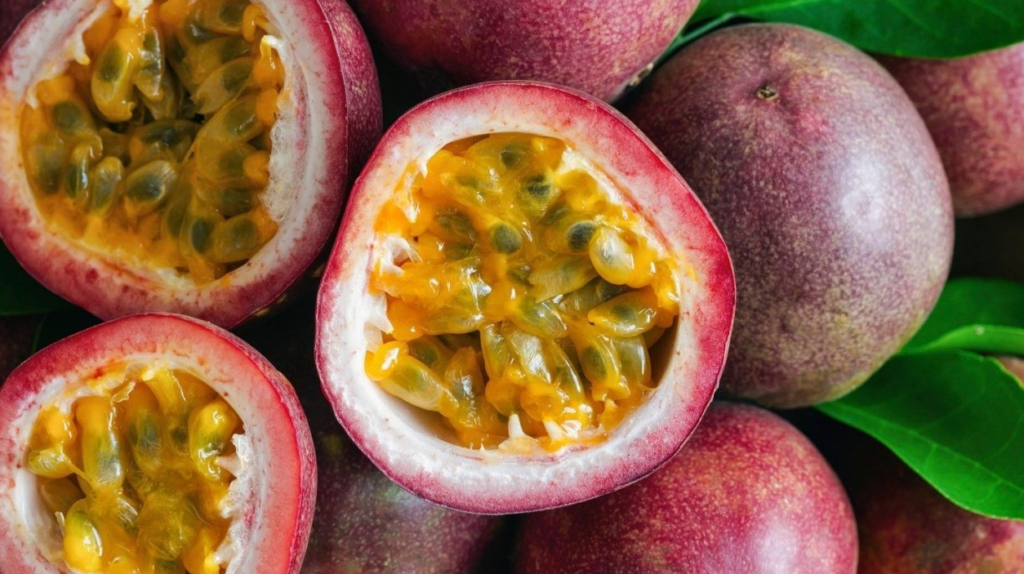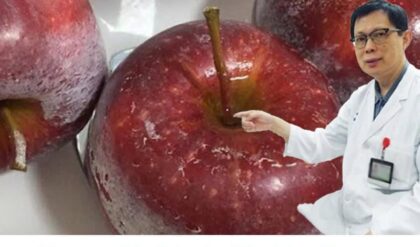Passion fruit, renowned for its tropical flavor and numerous health benefits, is a fantastic plant to cultivate at home. Even if you lack a spacious garden, growing passion fruit in containers is an easy and satisfying way to enjoy fresh fruit. This guide will walk you through each step to ensure your passion fruit plant thrives and produces an abundant harvest.

1. Choosing the Right Container
The first step to success is selecting a suitable container. A large pot with a minimum capacity of 10 gallons is ideal, as it provides ample space for the plant’s roots to grow. Ensure the container has drainage holes to prevent waterlogging, which can lead to root rot.
2. Preparing the Soil
Passion fruit thrives in well-draining soil with a slightly acidic to neutral pH (6.5-7.0). Create an optimal mix by combining equal parts of garden soil, compost, and perlite or sand. This blend ensures proper drainage while supplying essential nutrients for healthy root development.
3. Selecting the Right Variety
Common passion fruit varieties include Passiflora edulis (purple passion fruit) and Passiflora ligularis (sweet granadilla). Choose a variety that suits your local climate and personal taste preferences. These plants thrive in warm conditions, so ensure your region’s weather aligns with their needs.

4. Planting the Seeds
Growing from seeds is possible, but seedlings often provide a faster and more reliable start. If using seeds:
- Soak them in water for 24 hours to soften the seed coat.
- Plant them half an inch deep in your prepared soil.
- Keep the soil moist until germination, which takes 2–4 weeks.
- Transplant the seedlings into a larger container once they grow a few inches tall.
5. Transplanting Seedlings
If you’re using seedlings, select healthy ones from a trusted nursery. Transplant them into your container once they reach 6–8 inches in height. Dig a hole in the soil, place the seedling inside, and cover the roots with soil. Water thoroughly after planting.
6. Providing Support
Passion fruit vines are climbers and require a sturdy trellis or support structure. Position the trellis in the container and guide the vines upward. As the plant grows, tie the branches gently to the trellis to promote vertical growth and prevent tangling.
7. Sunlight and Temperature
Position your container in a spot that receives 6–8 hours of direct sunlight daily. Passion fruit thrives in warm temperatures between 70°F and 85°F (21°C to 29°C). If you live in a cooler climate, consider moving the plant indoors during colder months or using a greenhouse.
8. Watering and Fertilizing
Water your plant regularly to keep the soil consistently moist, but avoid waterlogging. During the growing season, increase watering frequency. Fertilize with a balanced, slow-release fertilizer every 4–6 weeks to encourage lush growth and fruit production.
9. Pruning
Pruning is vital for maintaining the plant’s health and maximizing fruit yield. Remove dead or diseased branches and trim the plant to control its size. Proper pruning improves air circulation and sunlight penetration, reducing the risk of pests and diseases.
10. Pest and Disease Management
Common pests include aphids, mealybugs, and scale insects. Use neem oil or insecticidal soap to manage infestations. Prevent root rot and fungal infections by ensuring good drainage and proper airflow. Regularly inspect your plant for early signs of problems.
11. Harvesting Passion Fruit
Your passion fruit is ready to harvest when it changes from green to its mature color—purple, yellow, or red, depending on the variety. The fruit should feel slightly heavy and may have a wrinkled surface, indicating ripeness. Twist gently to remove the fruit from the vine. Store ripe passion fruit at room temperature for a few days or refrigerate it for up to two weeks.

Conclusion
Growing passion fruit at home in containers is an enjoyable and rewarding gardening project. With the right container, soil, care, and attention to the needs of your passion fruit plant, you can enjoy the delicious fruits right from your own garden. Whether you’re an experienced gardener or a beginner, following these steps will help you successfully cultivate passion fruit in your home, no matter how limited your gardening space may be.
Inspired by this? Share the article with your friends!





